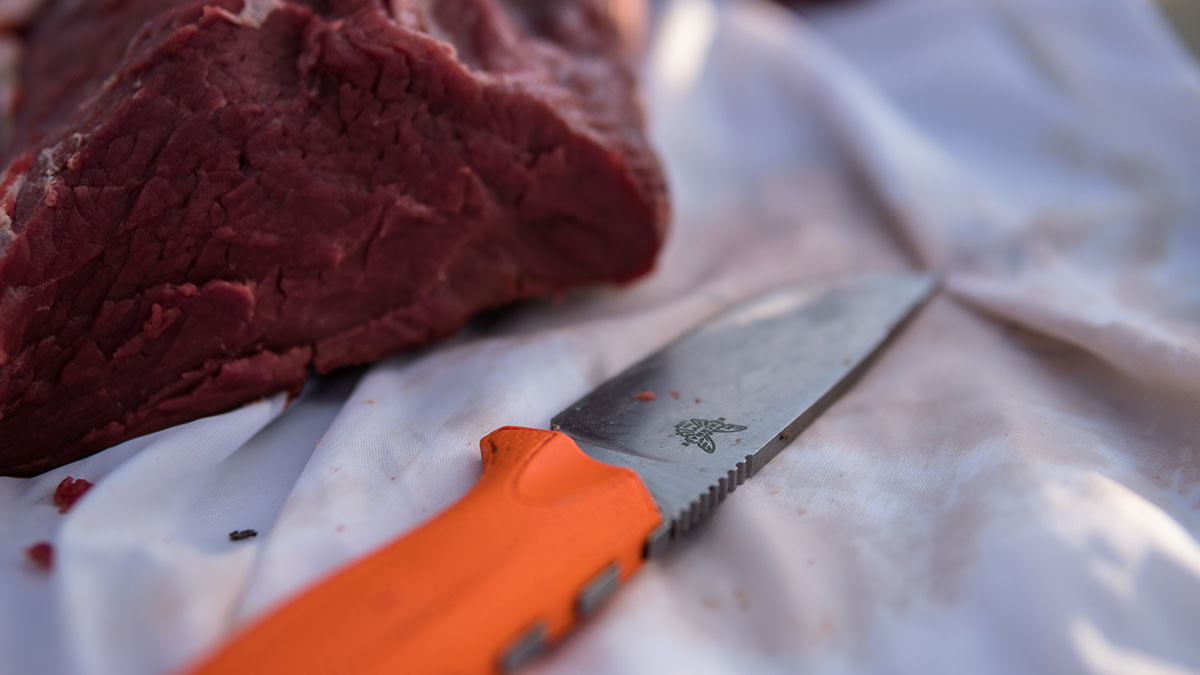
The word “gamey” has become a blanket term used to describe unpleasant or unfamiliar flavors in wild meats. That stigma surrounding certain animals is often misplaced, but still used as an excuse to not eat some harvests. In reality, more often than not, bad flavor is the result of human error.
Before you go and throw that dirty word around, look at your ingredients, preparation, and how you cared for the meat. What went wrong? Members of the MeatEater team are not exempt from these errors—we’ve had our fair share of bad meals with good meats. Here are a few of those stories.
Brody Henderson
A few years back, I convinced my wife and son—who happily eat all manner of fish and game—to give deer liver a try. The problem is that I stupidly chose a liver from an old-as-hell mule deer buck. If you’re averse to the strong flavors of liver, a hot tip is that they don’t get better with age. It’s best to start out with one from a young animal. A yearling’s liver is best—they’re mild and pleasant tasting. The liver from an older animal will oftentimes have a much stronger taste.
To make matters worse with this meal, I left the damn thing in a hot skillet way too long, which is a cardinal sin when dealing with liver. The smell of that overcooked meat was almost as bad as the taste. I did my best to fake enjoyment while they struggled to choke down a single piece. Even I decided to throw in the towel after a few bites. It was inedible. Needless to say, my wife and son haven’t eaten deer liver since.
Sam Lungren
Last September, on the way up into the mountains to hunt elk with MeatEater staffers Miles, Joe, and Ben, I killed a hen turkey out of a flock we spotted from the road. Once we set up camp, I breasted the bird then breaded it with crushed Ritz Crackers. At this point, we all realized we had no form of cooking oil. Not to be deterred, I got a skillet hot over the stove and poured in a beer. To be completely clear, cheap beer is a very poor substitute for cooking oil.
We ate the first breast—not bad at all—then sliced up the other to sauté in the pan a little longer. Suddenly and without much forethought, Ben grabbed a bottle of green Habanero hot sauce out of my cook kit, took off the cap, and poured. I think he assumed there was a stopper. There was not a stopper. Now the pan had about equal parts turkey and nuclear-hot hot sauce. It was basically inedible, but I mixed it in with a can of stew the next morning and was able to choke down the rest. Lesson learned: hot sauce in moderation.
Ryan Callaghan
Elk heart is one of my favorite pieces of meat. Once I made a pasta out of the contents of my desolate refrigerator: elk heart and arugula. The arugula must have been older than I suspected, and the bitterness in the green made the pasta inedible. Make sure your ingredients are fresh, folks.
Equally bad was the time I attempted to brine a goose that had sat, guts in, for about a week. When I cleaned the goose, it was impossible to ignore the smell of gut shot, but I was convinced that the brine and smoker would take care of it. All it took was one taste for me to commit to gutting my birds prior to aging. I’ve done it ever since.
Miles Nolte
Goose jerky requires refrigeration. That’s a valuable piece of advice I’m giving away for free. I learned the hard way some years ago when I was visiting the town in Hawaii where I grew up. New Year’s Day, my buddies and I had a long-standing tradition. No matter how late we were out or how intoxicated we got the night before, we all met at Dave’s house before dawn to load up his 27-foot boat and go offshore looking for tuna or mahi. Those were purifying mornings, with copious genuflections at the gunnel to purge and atone for sins of the previous year.
One time, I brought several pounds of Canada goose jerky with me from Montana to give out as Christmas presents. In case you don’t know, the goose hunting in Hawaii isn’t great. Though Hawaii’s state bird is the native Nene goose, they’re endangered, so I don’t recommend gunning them. Anyway, the batch of jerky I made that particular year was especially delicious, but the marinade failed to include pink curing salt. After a week of sitting around in the warm humidity of my parents’ house, unrefrigerated, some pieces of the jerky had begun to grow beards that Portland hipsters would envy. Unfortunately, I failed to notice this development before ceremoniously passing around jerky to everyone on board as a fortifying snack. Suffice to say, we left one hell of a chum slick that day.
Whether they result in producing chum slicks that could be picked up by marine radar or having to throw away your favorite cut of meat, bad meals happen. Make sure to check your ingredients and prep and store your game appropriately to mitigate bad meals in the future.







Conversation